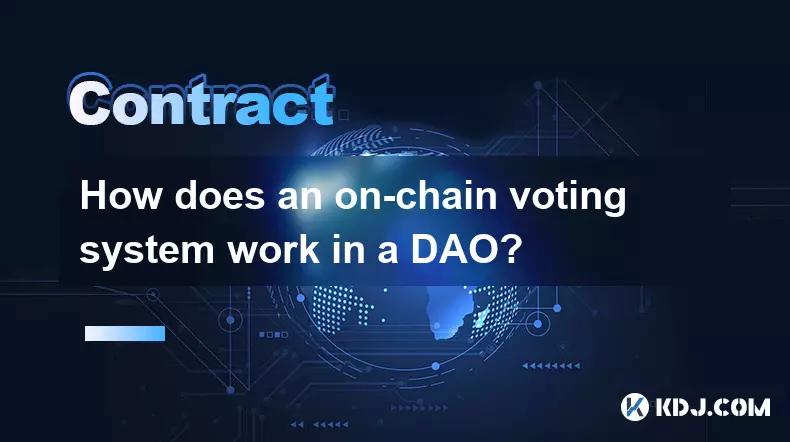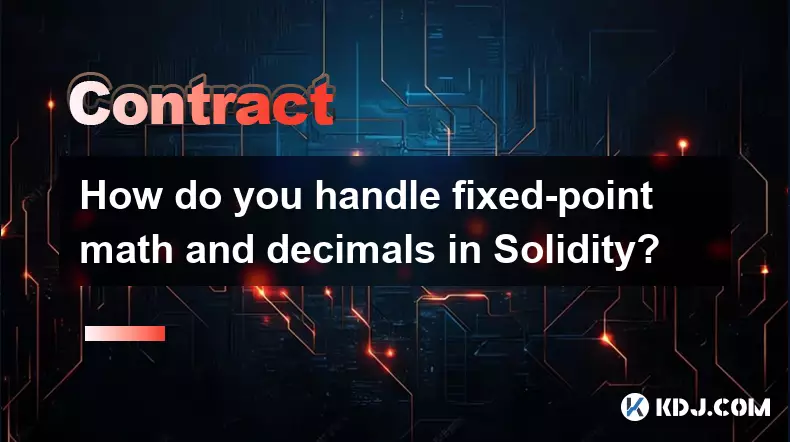-
 bitcoin
bitcoin $101752.865364 USD
-1.09% -
 ethereum
ethereum $3382.985899 USD
-1.38% -
 tether
tether $0.999658 USD
0.04% -
 xrp
xrp $2.272505 USD
-1.51% -
 bnb
bnb $989.089004 USD
0.14% -
 solana
solana $156.962612 USD
-3.08% -
 usd-coin
usd-coin $0.999776 USD
0.01% -
 tron
tron $0.290786 USD
-0.69% -
 dogecoin
dogecoin $0.174594 USD
-2.86% -
 cardano
cardano $0.560085 USD
-3.55% -
 hyperliquid
hyperliquid $40.023704 USD
-5.75% -
 chainlink
chainlink $15.324649 USD
-2.78% -
 bitcoin-cash
bitcoin-cash $493.576540 USD
-3.52% -
 zcash
zcash $571.320038 USD
-12.05% -
 stellar
stellar $0.280066 USD
-4.26%
How do you safely send Ether to another contract?
Always verify a contract has a payable function before sending Ether, as transfers to non-payable contracts will revert and may lock funds permanently.
Nov 09, 2025 at 06:40 pm

Sending Ether to Smart Contracts: Key Considerations
1. Verify that the receiving contract has a payable fallback function or a designated payable function capable of accepting Ether. Without this, any transfer will revert, potentially locking funds permanently.
2. Use address(contract).call{value: amount}('') cautiously when interacting with external contracts, as it forwards all remaining gas and lacks built-in safety checks. This method bypasses compile-time checks and can expose your transaction to reentrancy attacks if not properly guarded.
3. Prefer using .transfer() or .send() over low-level calls in older Solidity versions, as they limit gas forwarding to 2300 units, reducing the risk of malicious code execution during receipt. Note that .send() returns false on failure instead of reverting, requiring explicit error handling.
4. Always implement checks-effects-interactions pattern in your own contracts when sending Ether. Ensure state changes occur before calling external contracts to prevent reentrancy exploits that could drain funds during recursive callbacks.
5. Confirm the target contract’s source code is verified and audited. Deployed contracts without published code pose significant risks, as their behavior cannot be independently validated prior to interaction.
Avoiding Common Pitfalls in Ether Transfers
1. Never assume a contract can receive Ether just because it exists. Many contracts explicitly block direct Ether reception by reverting in their fallback functions unless specific conditions are met.
2. Be cautious with delegatecall usage when forwarding Ether. Since delegatecall executes code in the context of the calling contract, combining it with value transfers can lead to unexpected storage modifications and fund loss.
3. Watch for gas estimation errors when sending Ether through web3 interfaces. Some wallets may fail to account for additional computation required by the recipient contract, leading to out-of-gas failures even with seemingly sufficient limits.
4. Avoid hardcoded addresses in production environments. Instead, use registered contract references or immutable variables initialized during deployment to reduce the chance of misdirected transfers.
5. Test transactions on testnets using identical configurations to mainnet before executing high-value transfers. Differences in compiler versions or network conditions can alter contract behavior unexpectedly.
Security Practices for Inter-Contract Ether Flow
1. Implement withdrawal patterns instead of push payments whenever possible. Let users withdraw funds rather than pushing Ether directly to them, minimizing exposure to failed sends and denial-of-service vectors.
2. Apply rate limiting on repeated Ether transfers within a single contract to mitigate potential abuse scenarios where attackers force repeated interactions to manipulate balances or trigger unintended side effects.
3. Utilize OpenZeppelin’s Address.sol library for safe transfers. Its function sendValue includes automatic success checks and reverts on failure, simplifying secure Ether dispatch.
4. Monitor for silent failures when using .send(). Unlike .transfer(), which reverts on failure, .send() returns a boolean; neglecting to check its result can lead to unnoticed fund retention issues.
5. Restrict access to Ether-sending functions using modifiers like onlyOwner or role-based controls unless public accessibility is strictly necessary. Unrestricted functions increase attack surface for unauthorized fund dispersion.
Frequently Asked Questions
What happens if a contract receives Ether but cannot handle it?If a contract lacks a payable fallback or receive function, any attempt to send Ether will cause the transaction to revert. This protects the sender from accidental loss but requires careful validation before initiating transfers.
Can a contract self-destruct and reclaim Ether after sending it elsewhere?Yes, via the selfdestruct(address) opcode, a contract can forcibly send its balance to another address, even if that address normally rejects Ether. This bypasses normal reception logic and should be used sparingly due to its invasive nature.
Is it safe to use msg.value in constructor functions?Constructors can accept Ether during deployment if marked as payable. However, extreme caution is needed, as any logic errors in initialization could result in locked or misallocated funds with no upgrade path.
How does EIP-1884 affect Ether transfers to contracts?EIP-1884 increased the cost of certain opcodes like SLOAD, which impacts gas calculations for contracts receiving Ether. Transactions that previously succeeded might now run out of gas, especially those relying on complex fallback logic during receipt.
Disclaimer:info@kdj.com
The information provided is not trading advice. kdj.com does not assume any responsibility for any investments made based on the information provided in this article. Cryptocurrencies are highly volatile and it is highly recommended that you invest with caution after thorough research!
If you believe that the content used on this website infringes your copyright, please contact us immediately (info@kdj.com) and we will delete it promptly.
- Ripple (XRP) in 2026: Hold or Fold? A Look at XRP's Future and Emerging DeFi Alternatives
- 2025-11-08 18:35:01
- Zcash ZEC Coin Price Explosion: From Privacy Niche to Center Stage
- 2025-11-08 18:55:01
- Berachain Price Prediction: Navigating the Honeycomb Hype in Crypto
- 2025-11-08 18:55:01
- Arthur Hayes, Gold, and Bitcoin: A Modern Monetary Trinity?
- 2025-11-08 19:15:01
- Shiba Inu's Next Move: Navigating a Shifting Market
- 2025-11-08 19:20:01
- Pakistan's Crypto Crossroads: Balancing Opportunity with Asset-Backed Realities
- 2025-11-08 19:20:01
Related knowledge

How do you safely send Ether to another contract?
Nov 09,2025 at 06:40pm
Sending Ether to Smart Contracts: Key Considerations1. Verify that the receiving contract has a payable fallback function or a designated payable func...

What is a state machine and how can a contract be designed as one?
Nov 08,2025 at 02:19pm
Understanding State Machines in Blockchain Context1. A state machine is a computational model used to design systems that transition between defined s...

How does a bonding curve work and how is it used for token sales?
Nov 09,2025 at 04:00pm
Understanding the Mechanics of Bonding Curves1. A bonding curve is a mathematical function that links the price of a token to its supply. As more toke...

How do you upgrade a smart contract using the UUPS proxy pattern?
Nov 09,2025 at 01:19am
Understanding the UUPS Proxy Pattern in Smart Contract DevelopmentThe UUPS (Universal Upgradeable Proxy Standard) pattern has become a cornerstone in ...

How does an on-chain voting system work in a DAO?
Nov 09,2025 at 04:20pm
Understanding On-Chain Voting in DAOs1. An on-chain voting system operates directly on a blockchain network, allowing token holders to cast votes that...

How do you handle fixed-point math and decimals in Solidity?
Nov 08,2025 at 11:40pm
Understanding Fixed-Point Arithmetic in Solidity1. Solidity does not natively support floating-point numbers, which means developers must rely on fixe...

How do you safely send Ether to another contract?
Nov 09,2025 at 06:40pm
Sending Ether to Smart Contracts: Key Considerations1. Verify that the receiving contract has a payable fallback function or a designated payable func...

What is a state machine and how can a contract be designed as one?
Nov 08,2025 at 02:19pm
Understanding State Machines in Blockchain Context1. A state machine is a computational model used to design systems that transition between defined s...

How does a bonding curve work and how is it used for token sales?
Nov 09,2025 at 04:00pm
Understanding the Mechanics of Bonding Curves1. A bonding curve is a mathematical function that links the price of a token to its supply. As more toke...

How do you upgrade a smart contract using the UUPS proxy pattern?
Nov 09,2025 at 01:19am
Understanding the UUPS Proxy Pattern in Smart Contract DevelopmentThe UUPS (Universal Upgradeable Proxy Standard) pattern has become a cornerstone in ...

How does an on-chain voting system work in a DAO?
Nov 09,2025 at 04:20pm
Understanding On-Chain Voting in DAOs1. An on-chain voting system operates directly on a blockchain network, allowing token holders to cast votes that...

How do you handle fixed-point math and decimals in Solidity?
Nov 08,2025 at 11:40pm
Understanding Fixed-Point Arithmetic in Solidity1. Solidity does not natively support floating-point numbers, which means developers must rely on fixe...
See all articles





















![The Graph Price Prediction [GRT Crypto Price News Today] The Graph Price Prediction [GRT Crypto Price News Today]](/uploads/2025/11/07/cryptocurrencies-news/videos/690d4df44fe69_image_500_375.webp)




















































